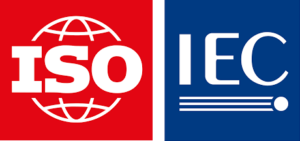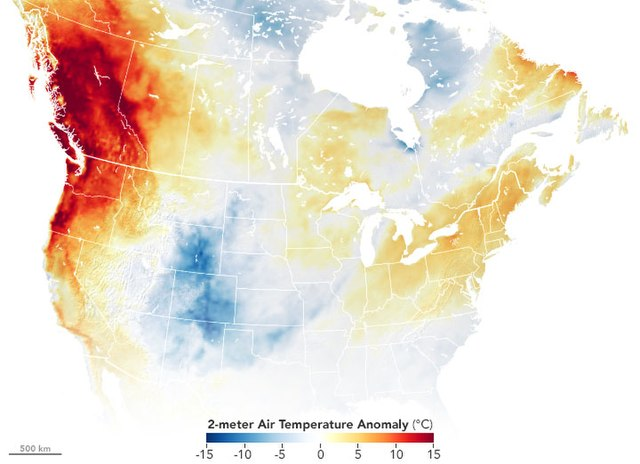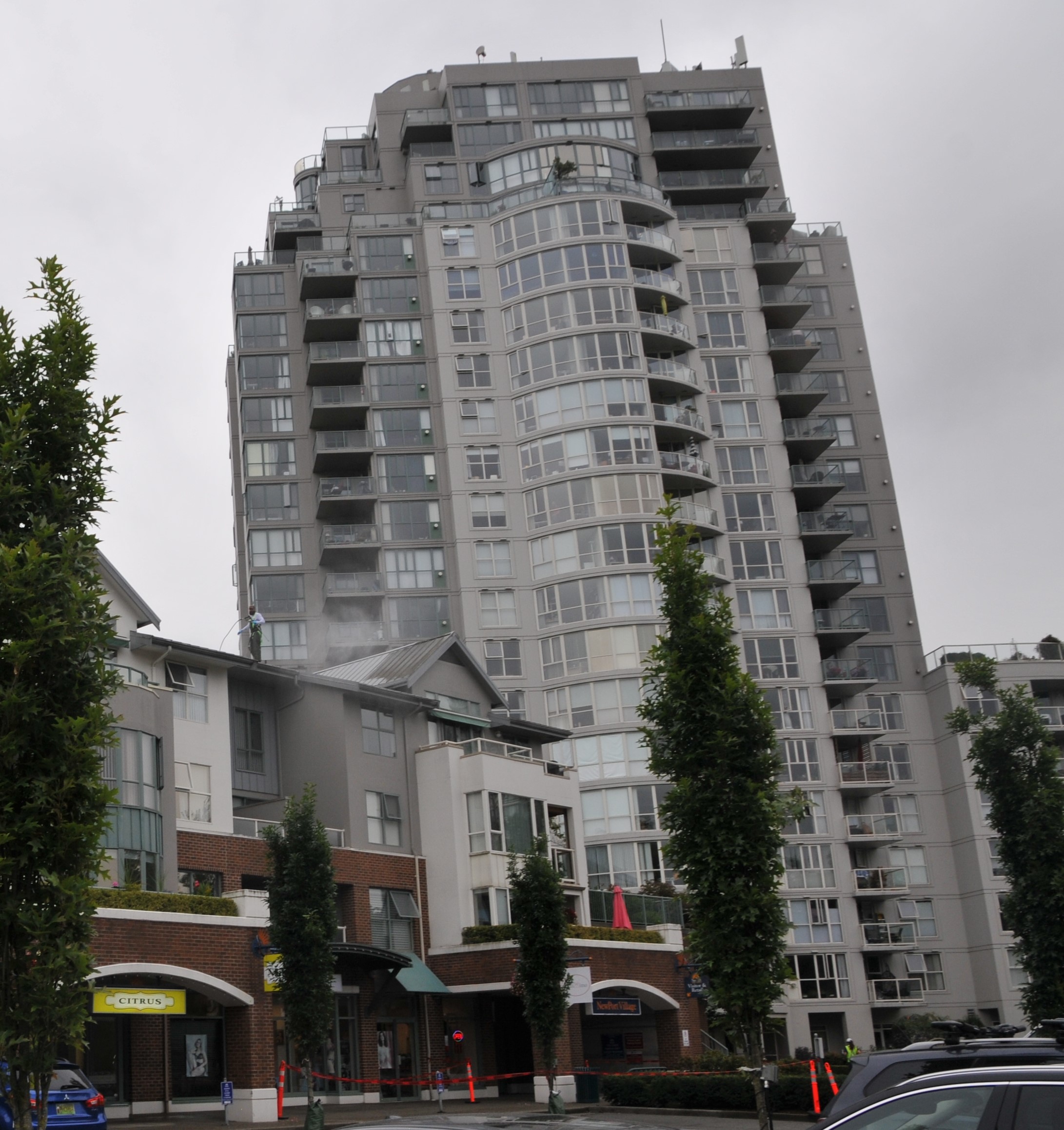This is the 10th article in a series that premiered in November 2021 on international standards for energy management. These standards support the transformation of the power grid from centralized generation to distributed energy resources including local solar, wind, and stored energy in homes and buildings. This series of articles is available at:
https://www.ashb.com/category/energy-management/
 These are voluntary industrial standards developed to promote world trade by a committee I chair for ISO1 and IEC2. They are part of a family of standards for interconnected consumer electronics (home automation) called the “Home Electronic System” (HES)3. I welcome your comments and participation in developing these standards; please visit kenwacks.com for contact data.
These are voluntary industrial standards developed to promote world trade by a committee I chair for ISO1 and IEC2. They are part of a family of standards for interconnected consumer electronics (home automation) called the “Home Electronic System” (HES)3. I welcome your comments and participation in developing these standards; please visit kenwacks.com for contact data.
International standards developed by ISO and IEC are intended to expand markets for companies that design, manufacture, distribute, and install components, products, and systems. The specifications in these standards are crafted to describe functions, architectures, communication protocols, and device interfaces so a variety of products can be designed that comply with the standards. It has always been a challenge and balancing act to achieve enough specificity without inhibiting innovation.
The test for usefulness of a standard is adoption. As I described in this series, many of the HES standards focus on facilitating energy management within homes and buildings. This series of ASHB Journal articles on user-centric energy management has introduced the international standards developed for the Energy Management Agent (EMA, ASHB Journal issue of December 20214) and the HES gateway (ASHB Journal of October 20225). In 2023 Ludo Bertsch of Victoria, British Columbia, Canada, a member of the committee developing these standards, reported that his company, Horizon Technologies, is using the EMA and HES gateway standards to solve a serious problem that is threatening the health of apartment occupants.
Acknowledgement
This paper is based on engineering data provided by Ludo Bertsch, P.Eng., President of Horizon Technologies (www.horizontec.com). I thank him for this information and for his many excellent contributions to the development of HES standards.
The title of P.Eng. designates that Ludo is a registered Professional Engineer through the Engineers and GeoScientists British Columbia (EGBC). As such, he has a responsibility to follow sustainability principles and an ethical obligation to address climate change.
Climate change threatens lives in Vancouver
About 600 people died during 2021 in British Columbia because of poor energy management in buildings that were not designed for extreme heat. The US National Aeronautics and Space Administration (NASA) published a photo of this event shown in Figure 1. It contains a NASA Earth Observatory image of temperature anomalies on June 27th, 2021 during the heat wave that affected western North America compared to the 2014-2020 average for the same day.

Figure 1 – Heat dome over the Pacific Northwest
In a report to the Chief Coroner of British Columbia in 2022 a panel of about two-dozen health experts6 concluded:
Extreme heat events (EHE) are also described in the literature as “heat waves” or “heat domes”. A heat dome occurs when an area of high pressure stays over the same area for days or even weeks, trapping very warm air underneath – rather like a lid on a pot [according to the Royal Meteorological Society: www.rmets.org]. The definition of an extreme heat event varies based on many factors, including geographic location and weather conditions such as temperature, humidity, and cloud cover as well as the duration of the event. During this type of event, the temperature is much hotter than average for a particular time and place.
In late June 2021, British Columbia (BC) experienced an unprecedented heat dome which resulted in record temperatures across many parts of the province over several days. Temperatures started to rise on June 24 and continued increasing to a peak on June 28-29. At the peak, temperatures reached over 40°C [104°F] in many parts of the province. Overnight temperatures were also uncharacteristically high. During the week of the EHE (June 25–July 1, 2021), the BC Coroners Service (BCCS) responded to a sudden and significant increase in deaths. More than 800 deaths were investigated by BCCS during that week, with 619 of these deaths later identified as being heat-related.
An article in Earth Systems Dynamics of December 20227 attributed this heat dome to climate change. This unusual heat was a “1000-year event” that may now occur much more frequently due to climate change:
Towards the end of June 2021, temperature records were broken by several degrees Celsius in several cities in the Pacific Northwest areas of the US and Canada, leading to spikes in sudden deaths and sharp increases in emergency calls and hospital visits for heat-related illnesses. … Based on observations, modelling and a classical statistical approach, the occurrence of a heat wave … was found to be virtually impossible without human-caused climate change. The observed temperatures were so extreme that they lay far outside the range of historical temperature observations. This makes it hard to state with confidence how rare the event was. Using a statistical analysis that assumes that the heat wave is part of the same distribution as previous heat waves in this region led to a first-order estimation of the event frequency of the order of once in 1000 years under current climate conditions. Using this assumption and combining the results from the analysis of climate models and weather observations, we found that such a heat wave event would be at least 150 times less common without human-induced climate change. Also, this heat wave was about 2°C hotter than a 1-in-1000-year heat wave would have been in 1850–1900, when global mean temperatures were 1.2°C cooler than today. Looking into the future, in a world with 2°C of global warming (0.8°C warmer than today), a 1000-year event would be another degree hotter. Our results provide a strong warning: our rapidly warming climate is bringing us into uncharted territory with significant consequences for health, well-being and livelihoods. Adaptation and mitigation are urgently needed to prepare societies for a very different future.
This paper concludes with a warning:
Looking into the future to a world with 2°C of global warming, an event like this, estimated to occur only once every 1000 years in the current climate, would occur roughly every 5 to 10 years according to the best estimate, albeit with large uncertainties around it.
Heat dome impact on Vancouver apartment buildings
According to Wikipedia, Vancouver “has a temperate oceanic climate. Its summer months are typically dry and modestly warm…” with summer peaks of 22°C (about 72°F)8. In this mild climate, many residential buildings are not fully air-conditioned. In 2022 the government of Vancouver mandated, “Starting in 2025, builders will be required to install mechanical air cooling equipment in all new multi-family homes within the City of Vancouver.”9
However, there is a serious problem for existing apartments built without air conditioning (A/C). The government allocated funds for “medically vulnerable low-income households” to install A/C and the local utility, BC Hydro, offered $50 rebates on A/C purchases10. Many landlords then informed tenants that their leases do not allow the installation of A/C units. An attorney for a landlord explained:
Some types of A/C units, like window mounted ones, can leak and cause damage to the building envelope, in addition to drawing too much power for the electrical service available in the rental unit. A landlord can regulate the use of AC units in a tenancy agreement, including requiring a tenant to pay for damage caused by their AC unit.
Horizon Technologies was hired to examine the heat load on the building shown in Figure 2. It consists of a 20-story high-rise building and a four-story low-rise building containing 175 residential apartments and 8 commercial units (in the ground level of the low-rise building).

Figure 2 – Vancouver apartment affected by a heat dome
This building was opened in 1996 and was constructed with built-in ventilation but not A/C, typical of many buildings in the region. During the 2021 heat dome event, a number of suites in this building became too hot for occupancy. According to the Condominium Home Owners Association of British Columbia11
The coroner’s report has brought to light the seriousness of extreme heat events, and the necessity for cooling and public safety. It’s time everyone evaluated their air conditioning bylaws. Very few multi family buildings in the Fraser Valley [includes Vancouver] and Vancouver Island have collective or individual cooling systems. Our climate was historically moderate and natural cooling was the easiest economic choice for developers and homeowners. Climate events, such as the heat dome, or a polar vortex have forced us to change our building designs and mechanical systems. Everyone assumes heat during the winter is essential for survival. We need to acknowledge that cooling through extreme heat periods is also essential.
The management of this building12 decided that before purchasing equipment to improve the indoor environment, they needed to measure the impact of the exterior heat on the apartments. They hired Horizon Technologies to instrument the building with equipment to accumulate environment data about heat loading on the building. Ludo designed and installed an energy management and measurement system that complies with the relevant HES standards, which are described in the other articles in this series.
Deploying an energy measurement system
The heat load on the high-rise condominium building in Vancouver varies by apartment. The building was not constructed with central A/C. During the heat dome event night-time temperatures rose each night even though they were lower than during the day.
Since retrofitting A/C is expensive and disruptive, the building management council decided to determine where A/C was needed. They hired Ludo’s company for advice. Ludo recommended gathering data about temperatures in various parts of the building to accumulate quantitative data rather than depending on anecdotal reports from occupants. These data would be provided by equipment installed to measure the existing heat load in various apartments.
In 2023 Ludo installed temperature and relative humidity sensors in about 10 apartments plus an on-site weather station. The equipment will accumulate measurements for a full year, including in the spring and summer of 2024. Data are collected via a network conforming to the ISO/IEC HES standards for the gateway (ISO/IEC 15045 series) and energy management (ISO/IEC 15067-3 series). Ludo optimized the communications system by a careful choice of batteries, data formats, and the frequency of data sampling. Information about this network will be presented in a future ASHB Journal article.
Adapting the building to climate change
Environmental data gathered within the apartments during the spring and summer of 2024 will be analyzed to aid in proposals for mitigating the impact of extreme heat on the health of the residents.
Methods for handling the extreme heat conditions in the apartments vary according to location and orientation of the apartments relative to the sun. Among the possible remedies are:
- Install window films
- Install local air conditioners, fans, or heat pumps
- Improve the ventilation system
- Add heat blocking paint
- Install solar-power generating window glass, such as perovskite crystal glass.
Perovskite is a family of metal halide compounds forming a special type of glass that can generate solar power. This material can be deposited as a layer on surfaces including window glass to produce electricity, convenient as a local power source.
The selection of remedies will be assisted by Ludo’s analysis and agreement by the building management.
Fulfilling the objectives of the HES standards
The HES standards committee is responsible for developing the Home Electronic System (HES) family of standards that enable intelligent homes and buildings. These standards and reports (about 60) for home and small building networks allow electronic products, devices, and services to interoperate or to operate, where feasible, as a single coherent system13. This systems approach benefits all stakeholders including manufacturers, developers, service providers, installers, utilities, and customers.
To fulfill this mission, the HES standards committee is writing standards and technical reports that support applications such as entertainment, lighting, comfort control, life-safety, health, and energy management. These standards specify a network of networks that enables interoperation among consumer products, sensors, control devices, and user interfaces in houses and small buildings with the potential for access to external services. The scope of HES includes energy management applications and interworking among devices such as appliances, sensors, and actuators in homes and buildings. The HES committee is developing standards for interfacing enhanced energy grids (sometimes called “smart grids”), premises-based local power sources (such as solar panels and wind turbines), local energy storage, and devices connected to premises networks.
As this article explains, the HES standards are being applied to preserve health as we face new challenges for effective adaptation to climate change
© Copyright 2024 Kenneth P. Wacks

Dr. Ken Wacks has been a pioneer in establishing the home systems industry and a management advisor to clients worldwide. His business specialties include IoT (Internet of Things), cybersecurity, standards for home and building systems, AI-based energy management including renewables, and digital media networks. He also provides due-diligence for investors and expert witness services for litigants including patent, employment non-compete, and trade secret cases. Please visit kenwacks.com or contact Ken at +1 781 662-6211; [email protected]; www.kenwacks.com.
1. ISO is the International Organization for Standardization, founded in 1947, www.iso.org.
2. IEC is the International Electrotechnical Commission, founded in 1906, www.iec.ch.
Both ISO and IEC are headquartered in Geneva, Switzerland.
3. The Home Electronic System (HES) is the name of the international standards committee officially designated as ISO/IEC JTC 1/SC 25/WG 1:
JTC 1 = Joint Technical Committee 1, entitled Information Technology
SC 25 = Subcommittee 25, entitled Interconnection of Information Technology Equipment
WG 1 = Working Group 1, entitled Home Electronic System
4. https://www.ashb.com/ken-wacks-perspectives-shifting-energy-management-from-utilities-to-users/
5. https://www.ashb.com/ken-wacks-perspectives-the-home-sentry/
6. “Extreme Heat and Human Mortality: A Review of Heat-Related Deaths in B.C. in Summer 2021, ” Report to the Chief Coroner of British Columbia, Release Date: June 7, 2022.
7. Philip, S. Y., et. al., “Rapid attribution analysis of the extraordinary heat wave on the Pacific coast of the US and Canada in June 2021,” Earth Systems Dynamics, 13, 1689–1713.
8. https://en.wikipedia.org/wiki/Climate_of_Vancouver
9. “City of Vancouver to require air cooling in new homes starting in 2025,” Daily Hive, May 19, 2022. (online news: https://dailyhive.com/vancouver/vancouver-building-home-air-conditioning-requirement)
10. https://www.cbc.ca/news/canada/british-columbia/bc-air-conditioner-renters-1.6906665
11. “Condo Smarts,” Condominium Home Owners Association of British Columbia, Bulletin: 300-997, June 16, 2022.
https://choa.bc.ca/wp-content/uploads/300-997-16062022-Air-Conditioning-Health-Implications.pdf
12. The apartments in this building are “strata-titled” properties. This form of legal title to a property is very similar to a condominium. It is a popular form of ownership in Canada and Australia. A “strata council” maintains the common areas of the building, similar to a condominium board.
13. The family of WG 1 standards is called “Home Electronic System” rather than “home electronic systems” to reflect the goal of a single set of coherent standards.


